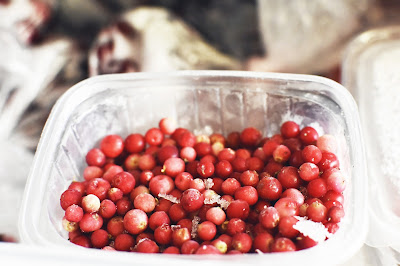Microbes and infections can be spread by cross-sullying. It happens when liquids from crude meats or germs from unclean things contact cooked or prepared to-eat suppers. By understanding a couple of straightforward strides as you shop, store, cook or transport nourishments, you can diminish the danger of daily food contamination from bacteria and viruses.
Step 1:
Shop Daily Food From Safe Zone
 |
| Shop Daily Food From Safe Zone |
- Cover crude meat, chicken, and fish in plastic sacks from the nourishment territory to keep liquids from spilling onto different food sources, and lean toward bundling that is completely fixed and not spilling.
- Separate solidified or new, crude meat, poultry, fish and eggs from produce and prepared to-eat suppers in your shopping basket.
- If you are moving daily food supplies, store meat, poultry, and fish in plastic packs to keep liquids from spilling.
- Always keep daily food like meats, fish, poultry, and eggs in various sacks, not with different nourishments.
Stage 2:
Keep store Daily Food in safe place
 |
| Keep store Daily Food in safe place |
- While putting away nourishments, freeze or refrigerate basic food item things inside two hours.
- Store daily food like meats and other fish type things on the base rack of your ice chest in various plastic packs or in their own compartments.
- Keep eggs in their unique container on the racks, rather than in the refrigerator entryway.
- Store leafy foods in one of a kind plastic packs in the produce cabinet. This guards them from compound, form, microscopic organisms and infections that may stow away in the cabinet.
- If you ordinarily wash items when you return home from the market, try to stock it in new sacks rather than the first ones.
- Store reusable utensils in a spotless, dry area and wash every now and again with hot, lathery water or in the clothes washer.
Stage 3:
Daily food cooking place should be clean
 |
| Daily food cooking place should be clean |
- Wash your hands with tepid, sudsy water for 20 seconds before making nourishment. What's more, wash them again previously, during and subsequent to contacting crude meats and nourishments.
- Never utilize a similar blade for crude meat, poultry or fish to slice items or prepared to-eat nourishments. Likewise, utilize an alternate utensil to taste and another to get ready nourishment.
- Stirring spoons, serving forks, cutting blades and plates used to hold crude nourishment can be secured with microscopic organisms. Make certain to supplant or wash recolored utensils and plates when they come into contact with crude nourishment, and consistently serve prepared nourishment on a spotless plate.
- Always Keep dishcloths, tables, and different surfaces clean.
Related Topic: Best home made protein food in pandemic stage
Stage 4:
Need Safe Transport
 |
| Need Safe Transport |
- Lunch boxes can think about Bacteria and infections as well. Keep them clean by washing them with warm, sudsy water after each utilization.
- Keep nourishments at the correct temperature by utilizing warm holders and cold packs.
According to the ( CDCP) Centers for Disease Control and Prevention, 85 percent of all infection borne by daily food item, could be halted if individuals oversaw nourishment appropriately and maintain a strategic distance from microscopic organisms and infections.
Read More: Herbal ingredients to prevent coronavirus infections



0 Comments